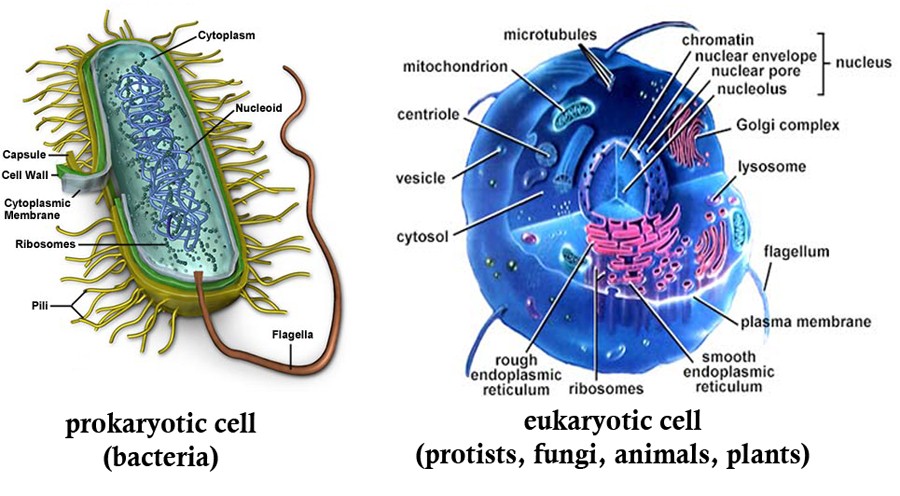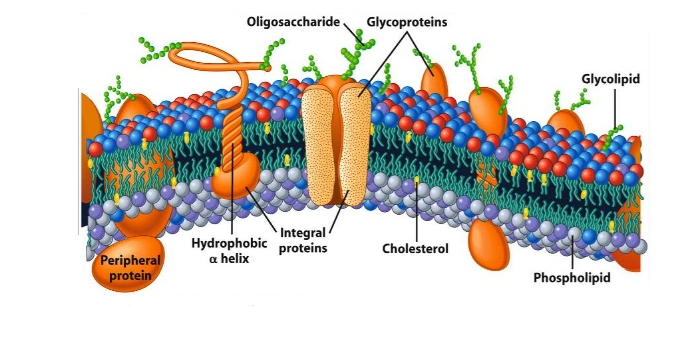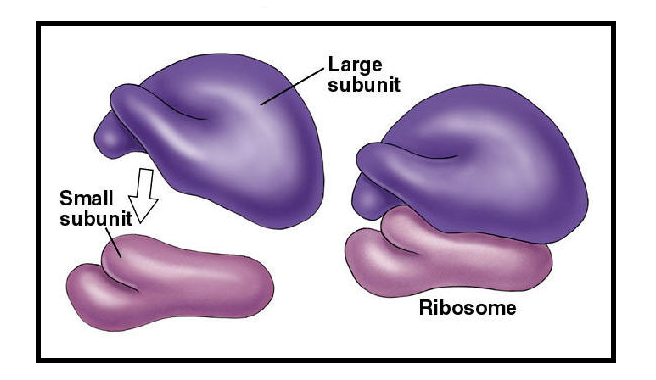Cell the Unit of Life
Table of Content |
|
|
 The Cell (from Latin cella, meaning "Small Room") is the basic Structural, Functional, and Biological unit of all known Living Organisms. A cell is the Smallest Unit of life that can replicate independently, and cells are often called the "Building Blocks of Life". The study of cells is called Cell Biology.
The Cell (from Latin cella, meaning "Small Room") is the basic Structural, Functional, and Biological unit of all known Living Organisms. A cell is the Smallest Unit of life that can replicate independently, and cells are often called the "Building Blocks of Life". The study of cells is called Cell Biology.
What is a Cell in Biology (in Human Body)?
Cell is the fundamental structural and functional unit of all living organisms.
Discovery of a cell
Anton Von Leeuwenhoek first saw and described a Live Cell. Robert Brown later discovered the Nucleus.
Types of Cells or different types of Cells
There are different types of cells present in human body. The largest cell in the human body is Ovum in females. And the smallest cell in the human body is Sperm.
Fig.1. Image of a cheek cells under the microscope
Apart from these, brain contain nerve cell or neurons, liver cells are known as Hepatocytes, Kidney cells are known as Nephron etc.
Why the Cell is the basic Unit of Life?
Every living organism such as plants and animals are made up of cells. So, cell is considered as the basic unit of life.
Functions of Cell
Cells perform different functions in different parts of the body. For Example: Neuron transmits information from brain to different parts of the body. Nephron is a structural and functional unit of kidney. Nephron helps in removal of nitrogenous waste from the body. Cells perform variety of metabolic reactions such as breakdown of complex molecules to release energy. Cells also synthesizes new molecules required by the body.
Cell theory
In 1838, Matthias Schleiden, a German botanist, examined that plants are made up of large number of cells. Theodore Schwann (1839), a British Zoologist, examined that animals are also made up of cells.
Later on, Rudolf Virchow explains that cells arise from pre-existing cell. This is known as Omnis cellula-e cellula.
Characteristics of Cell Theory
-
All organisms: plants and animals are made up of cells.
-
All cells arise from the pre-existing cells.
An Overview of Cell
1. Prokaryotes
Bacteria, blue green algae, mycoplasma and PPLO (Pleuro Pneumonia Like Organisms) represents prokaryotes. The cell of prokaryotes is known as Prokaryotic Cells. These cells are small in size and multiply at a faster rate. Prokaryotes have outermost covering known as Cell Wall, except in mycoplasma.
2. Eukaryotes
It includes protists, plants, fungi and animals.They have cell organelles separated by a membrane. They have well developed nucleus separated by a nuclear membrane.
Fig.2. Prokaryotic and Eukaryotic Cell
Parts of Cell / Human Cell / Human Cell Structure
Plasma Membrane
In eukaryotes (higher organisms), cell is surrounded by a membrane known as Plasma Membrane or Cell Membrane. Plasma membrane is made up of lipids and protein. This membrane is selective or semi-permeable in nature, that is, it allows only certain molecules to enter the cell while remaining left outside the cell.
Fig.3. Structure of Plasma Membrane
Plant cell is surrounded by cell wall. Cell wall is made up of polysaccharide known as Cellulose. Cellulose provides strength and rigidity to the cell.
There are certain modification of Plasma Membrane such as:
Bacteria have outermost envelope known as Glycocalyx. Glycocalyx is followed by cell wall and then plasma membrane. It is protective in nature. According to cell envelope or staining procedure, bacteria is classified as gram negative and gram positive. Bacteria that can be stained using gram stain are known as Gram Positive bacteria whereas those which are not stained are considered Gram Negative bacteria.
If glycocalyx is a loose sheath, then it is known as Slime Layer whereas if it is thick and tough it is known as Capsule.
Fluid Mosaic Model
According to this model, plasma membrane is composed of phospholipids, cholesterol, and proteins and exists in fluid state. The outer face of membrane contains glycoproteins ad glycolipids.
Fig.4. Fluid mosaic model
Glycolipids are carbohydrates attached to lipids whereas glycoproteins are carbohydrates attached to carbohydrates.
Ribosomes
These are the sites of protein synthesis. They are composed of two subunits- 50S and 30S subunit. These subunits together form 70S unit. 70S ribosome is present in bacteria. Eukaryotes contain 80S ribosome. The subunit of eukaryotic ribosomes is 60S and 40S. In prokaryotes, reserve material is stored in cytoplasm is the form of inclusion bodies.
Endomembrane System
It includes nucleus, Endoplasmic Reticulum, Mitochondria, Lysosomes, Golgi Apparatus, Plastids in plants and vacuole.
Endoplasmic Reticulum
A network of tubules spread in a cytoplasm is known as Endoplasmic Reticulum or ER. Inside of the ER is known as Lumen whereas outside the lumen is known as Extra Luminal. There are two types of ER- Rough ER and Smooth ER. Rough ER is covered by ribosomes whereas smooth ER do not contain ribosomes.
Fig.6. 3D Structure of ER
Rough ER is involved in protein synthesis and smooth ER is involved in fatty acid synthesis and detoxification.
Golgi Apparatus
Camillo Golgi first observed this structure. They consist of many flat, disc-shaped sacs or cisternae of 0.5μm to 1.0μm diameter. They are arranged near the nucleus. The side facing the nucleus is known as Cis Face whereas side away from the nucleus is known as Trans Face. It is primarily involved in secretion process.
Fig.7. Structure of Golgi Apparatus
It packages the materials in vesicles and helps in transportation to different cell organelles as well as outside the cell organelle.
 Lysosomes
Lysosomes
It is a membranous structure formed from golgi apparatus. It is garbage collector of the cell. It contains various hydrolytic enzymes such as lipases, proteases which works at acidic environment. They help in digestion of lipids, Proteins and Carbohydrates
Vacuoles
These are more prominent in plant cells as compared to animal cells. It contains water, sap and excretory product. The vacuole is bound by a membrane known as Tonoplast.
Fig.9. Structure of Vacuole
Amoeba contain vacuole-like structure known as Contractile Vacuole. This is essential for excretion.
 Mitochondria
Mitochondria
It has a double membrane structure – The Outer membrane and Inner membrane. The inner membrane is folded to form a structure known as Cristae. It is a site for ATP synthesis. The outer membrane and inner membrane is separated by intermembrane space.
The inner compartment is known as Matrix. DNA and ribosomes are present in the matrix of the mitochondria.
Plastids
These are found in plant cells. There are three types of plastids- Chloroplast, Chromoplast and Leucoplast.
 Chloroplast contain a green pigment known as Chlorophyll. The leaves appear green due to the presence of chlorophyll in it. The central atom present in chlorophyll is magnesium ion. Chlorophyll is essential for photosynthesis.
Chloroplast contain a green pigment known as Chlorophyll. The leaves appear green due to the presence of chlorophyll in it. The central atom present in chlorophyll is magnesium ion. Chlorophyll is essential for photosynthesis.
Chloroplast is double membrane structure-inner membrane and outer membrane. The space limited by the inner membrane of the chloroplast is called the stroma. Stroma contain flattened sac-like structure known as Thylakoids.
It is site of photosynthesis. Thylakoids are stacked upon each other to form grana. Each granum is connected with another granum by a lamella. Similar to mitochondria, chloroplast contain DNA and ribosomes.
Chromoplast provides color to flower and fruits. The pigment present in chromoplast are carotene which provides red color and xanthophyll which provides yellow-orange color.
Leucoplast are of different types such as amyloplast for storage of starch, aleuroplast store proteins and elaioplast stores oil and fats.
 Nucleus
Nucleus
It is a double membrane structure. The outer membrane is continuous with the ER and contain ribosomes on it. The space between the two membrane is known as Perinuclear Space. The two nuclear membrane are interrupted by minute pores known as Nuclear Pores, which allow only certain molecules of particular size to enter the nucleus. The nuclear matrix is known as Nucleoplasm.
Nucleoplasm is composed of chromatin and nucleolus.
Fig.13. Structure of Chromosome and DNA
Chromatin is a network of DNA surrounded by proteins known as Histone Proteins. During interphase (no cell division), the genetic material exists in the form of chromatin. At the time of cell division, the chromatin becomes compact and forms chromosomes. Chromosomes contain constriction known as Centromere. RNA synthesis occurs in the nucleolus.
Watch this Video for more reference
To read more, Buy study materials of Cell: The Unit of Life comprising study notes, revision notes, video lectures, previous year solved questions etc. Also browse for more study materials on Biology here.
View courses by askIITians


Design classes One-on-One in your own way with Top IITians/Medical Professionals
Click Here Know More

Complete Self Study Package designed by Industry Leading Experts
Click Here Know More

Live 1-1 coding classes to unleash the Creator in your Child
Click Here Know More

a Complete All-in-One Study package Fully Loaded inside a Tablet!
Click Here Know MoreAsk a Doubt
Get your questions answered by the expert for free








